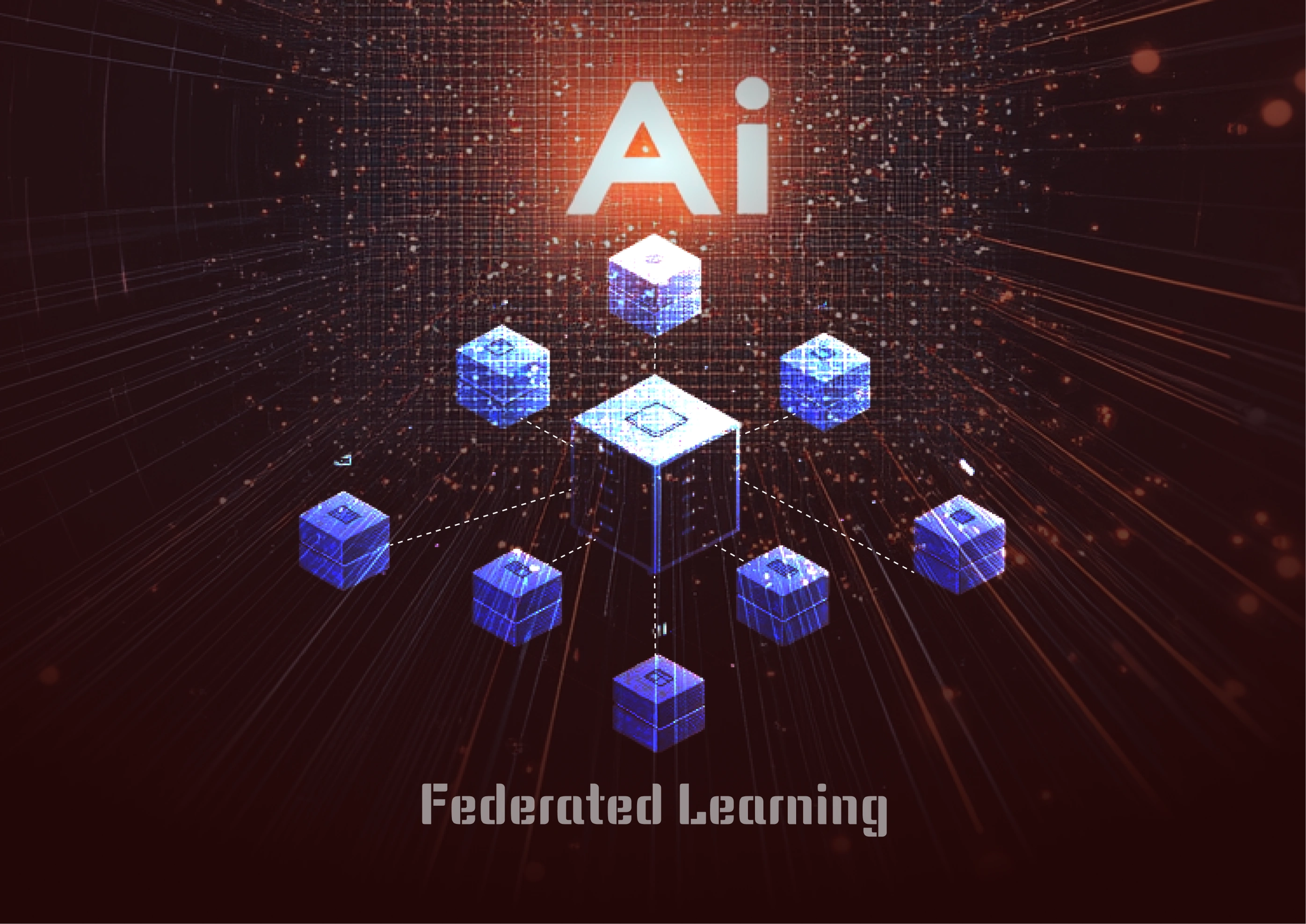Federated Learning: The Secret Sauce to Unleashing AI’s Potential Without the Privacy Risks
70% of Your IT Budget Is Wasted on Legacy
Legacy systems drain your spend, slow your teams, and stall innovation. Modernize with speed, security and confidence — guided by our experts.
Picture a bustling, modern city. Each building in this city holds its own treasure trove of knowledge – financial data in one skyscraper, healthcare records in a hospital, purchase history in a tech hub. Together, this data has the potential to power a brilliant, city-wide AI that could make the lives of every citizen better. But here’s the problem : sharing this information freely risks exposing sensitive details and breaching trust.
Federated Learning manages this risk. It’s the architect that enables this “city” to build a unified intelligence without moving the data from its original location. It’s as though each building is working on its own, updating a portion of the AI model within its walls, and only sharing the learned insights with a central “council” that aggregates them into a smarter, more powerful model. It’s a decentralized approach that ensures privacy without sacrificing the intelligence that AI can bring to the table.
But why is this approach so transformative, and how does it solve the age-old question of why AI is so difficult to implement successfully in business?
The Challenge: Why Businesses Struggle to Make AI Work
AI has always held promises as big as skyscrapers, yet most organizations feel the weight of three core obstacles : privacy, infrastructure, and data complexity. For every grand vision, there’s the grim reality of data privacy laws that makes sharing sensitive data risky. There are also the infrastructure demands of centralizing data for AI processing – massive servers, high-bandwidth networks, and, of course, the never-ending budget approvals.
And then there’s the labyrinth of data diversity. Imagine a business with branches in New York, Tokyo, and Paris, each with a unique set of data on customers, markets, and transactions. Centralizing this data is like forcing puzzle pieces together that don’t quite fit. The result? A fractured AI model that fails to represent the diversity it was meant to learn from.
But Federated Learning is here to change that. It transforms these skyscraper-sized challenges into building blocks of a new AI structure, one that’s decentralized, privacy-conscious, and capable of learning from data wherever it lives.

Federated Learning : The City That Learns Without Sharing Secrets
Let’s get technical for a moment, but imagine it within the city context. In Federated Learning, each “building” (or department, device, or organization) trains an AI model on its own local data. It’s as if every building has a resident architect who understands that building’s unique characteristics.
Step 1 : The Initial Blueprint
A central “council” creates a base model, initializing it with random parameters—a blueprint, if you will. This initial design is sent to each building in the city.
Step 2 : Localized Learning
Each building uses its own data – whether it’s patient records, customer preferences, or financial histories – to refine the model locally. This step is where the real magic happens. The model learns locally, adjusting and enhancing itself based on the unique characteristics of each building’s data, and keeping all personal data within the building.
Step 3 : Sharing the Wisdom, Not the Data
Instead of sending sensitive data to the council, each building shares only what it has learned – an update to the blueprint, if you will. These updates consist of changes in model parameters or gradients, which reflect the insights derived from local data without directly sharing the data itself. However, to further enhance security and ensure that no sensitive information is inadvertently revealed, it is crucial to incorporate techniques such as differential privacy and secure aggregation.
Step 4: Aggregating the Knowledge
The council, acting like a master architect, collects these updates from all buildings and blends them into a smarter, unified model. This aggregated model is then sent back to the buildings to start the next learning round, with each iteration building a more intelligent city-wide AI.

Through this process, the city benefits from a comprehensive intelligence, gaining insights that span all departments, without ever compromising the privacy of individual data sources.
Federated Learning Turning Challenges into Opportunities
Federated Learning does more than solve technical problems, it redefines them, transforming the usual barriers into powerful enablers for businesses. Let’s revisit those skyscraper-sized obstacles and see how Federated Learning turns each one on its head.
1. The Privacy Fortress
In a world with strict data privacy laws, centralizing data is risky. But in Federated Learning’s city, each building holds its data tight, never letting it travel across boundaries. The model updates shared with the council reveal nothing about individual data points, allowing companies to stay compliant with privacy regulations like GDPR and HIPAA. Federated Learning effectively builds a privacy fortress, where sensitive data stays locked down, yet the benefits of AI are still accessible.
2. Infrastructure Light, Impact Heavy
Centralizing data requires mammoth infrastructure – data warehouses, high-speed networks, and massive processing power. Federated Learning, however, lets the learning happen locally, with only updates being transferred. It’s the difference between shipping an entire building’s archives and sending a single postcard. This drastically reduces costs, making AI feasible even for companies that don’t have an Amazon-sized budget. It’s AI with a light infrastructure footprint but heavy on insights.
3. A Patchwork of Local Knowledge
The beauty of a city lies in its diversity, and so does the strength of a Federated Learning model. By training locally on unique, non-identical data from each building, the model becomes more robust and adaptable. This is especially powerful for companies with multiple locations, departments, or product lines. Each building’s unique data is woven into a patchwork of local knowledge, creating a global model that reflects the full diversity of the organization’s experiences.
Federated Learning turns data privacy, infrastructure limitations, and data diversity from challenges into advantages. And in doing so, it builds a city where AI can thrive without the constraints of traditional approaches.
Real-World Applications : Federated Learning in the Wild
Federated Learning is more than a concept, in fact, it’s shaping industries from healthcare to finance, and even the devices in our pockets.
Healthcare’s Guardian
Picture a network of hospitals, each with mountains of patient data. Traditional AI would demand centralizing all this information, risking privacy breaches. With Federated Learning, each hospital trains the model on its own data, contributing to a shared healthcare intelligence that respects patient privacy. The result? A smarter healthcare system capable of early disease detection and personalized treatment recommendations—all without sharing a single patient file.
Finance’s Secret Weapon
In the financial sector, Federated Learning allows banks across regions to enhance fraud detection models without revealing customer data. Each bank’s data remains confidential, yet every branch contributes to a fraud detection system that becomes sharper and faster at identifying suspicious transactions.

Your Personal AI Companion
On your smartphone, Federated Learning powers predictive text and app recommendations. Your phone learns your habits, preferences, and language, contributing these insights to improve the model for all users—without your personal data ever leaving your device.
These applications demonstrate Federated Learning’s potential to transform industries, allowing them to benefit from AI without the traditional risks.
The Path Forward: Federated Learning as AI’s Future
Federated Learning offers a roadmap for businesses wondering how to integrate AI without compromising data privacy, overhauling their infrastructure, or homogenizing their data. As businesses look for ways to innovate while adhering to regulatory requirements and managing costs, Federated Learning provides a clear path forward.
It’s a city that learns without sharing secrets – a harmonious network of isolated knowledge, each part contributing to a more powerful, unified whole. For decision-makers, this approach doesn’t just address the “Why AI implementation is challenging.” It proves that AI can be done differently, that intelligence and integrity can coexist.
The rise of Federated Learning is a promise fulfilled. Businesses can embrace AI’s transformative power without the pitfalls. As Federated Learning continues to evolve, we can expect AI to be integrated across industries in ways we once thought impossible—secure, cost-effective, and uniquely collaborative.
With Federated Learning, the AI city of the future is already here, and it’s learning, thriving, and growing, one private insight at a time.
This approach turns Federated Learning into an imaginative, technically rich story of how a decentralized AI “city” can thrive without breaking privacy barriers, building the narrative in a way that engages and informs readers.


